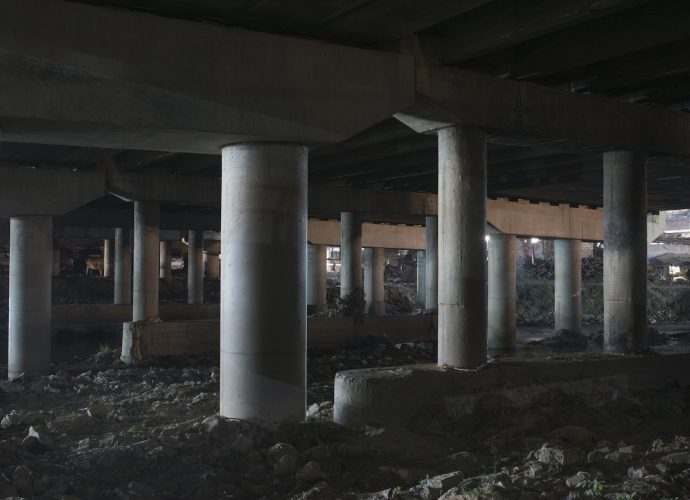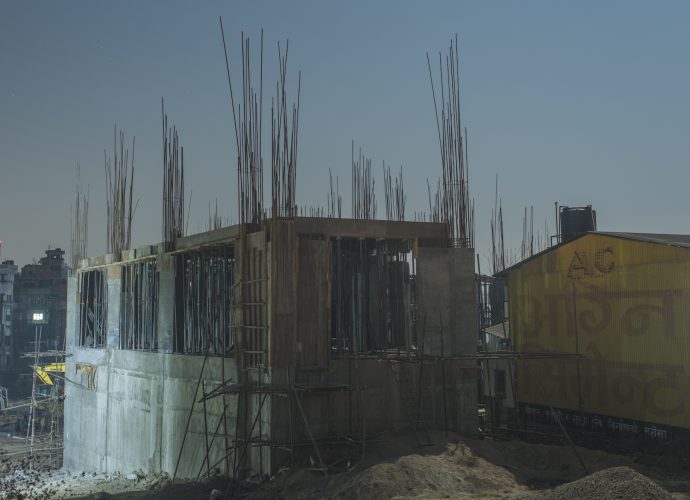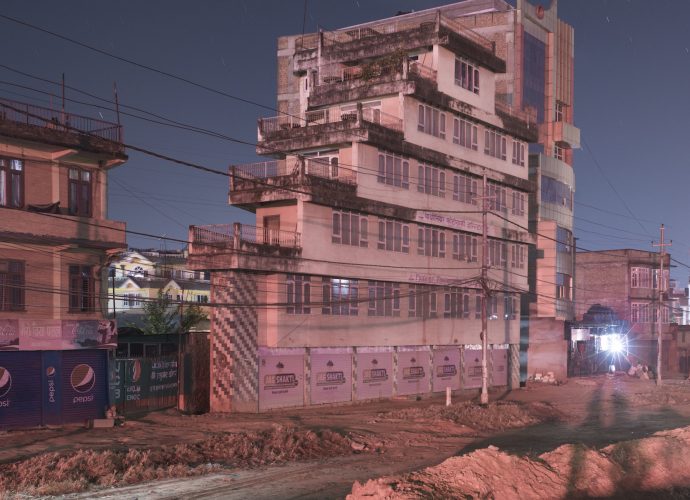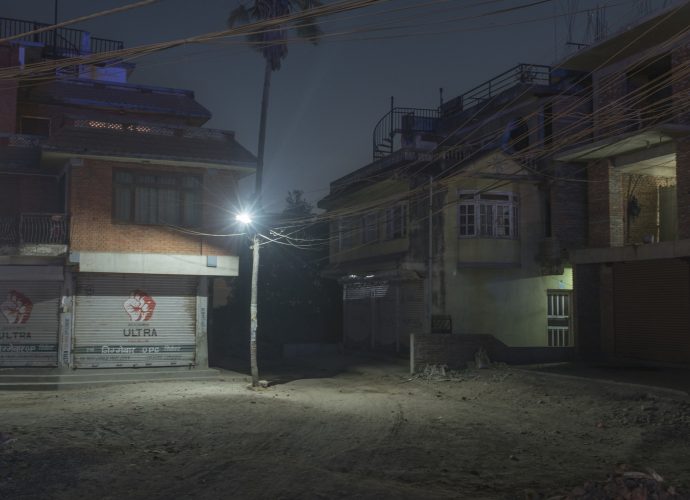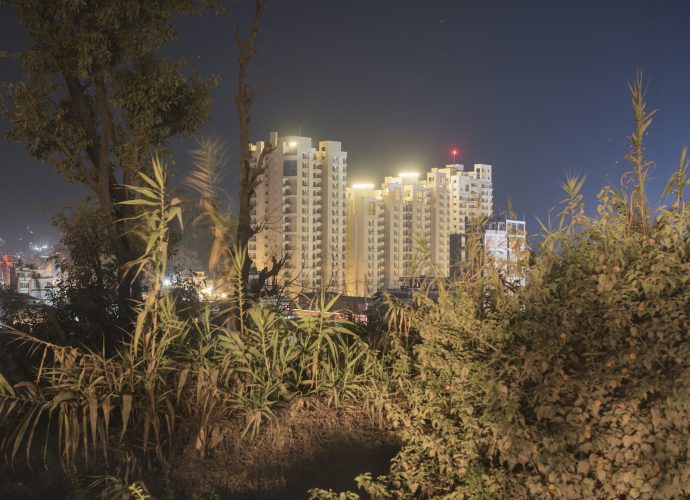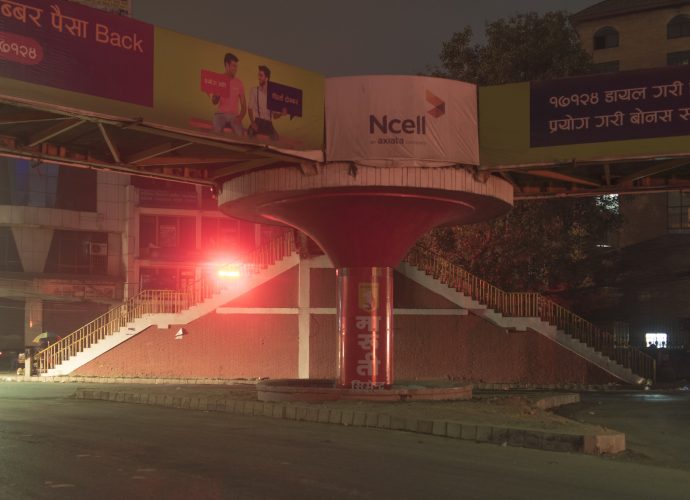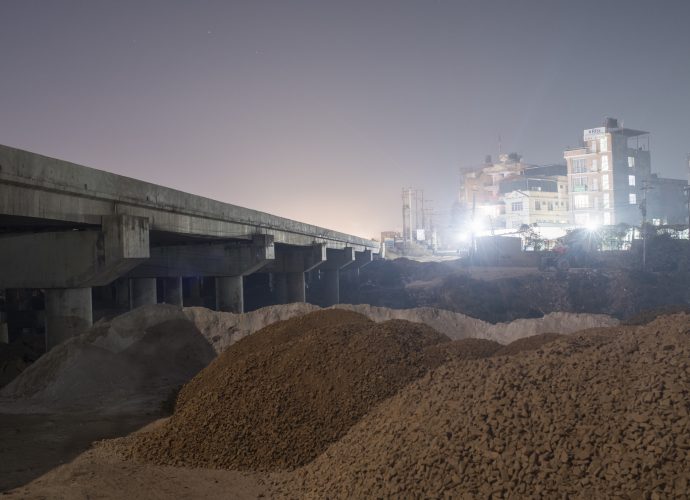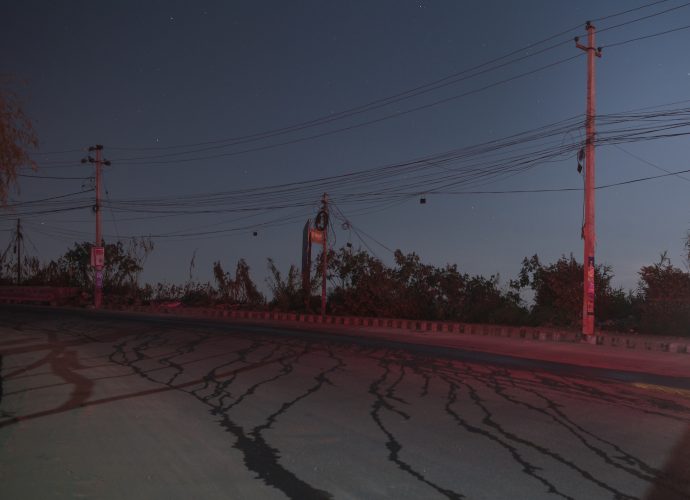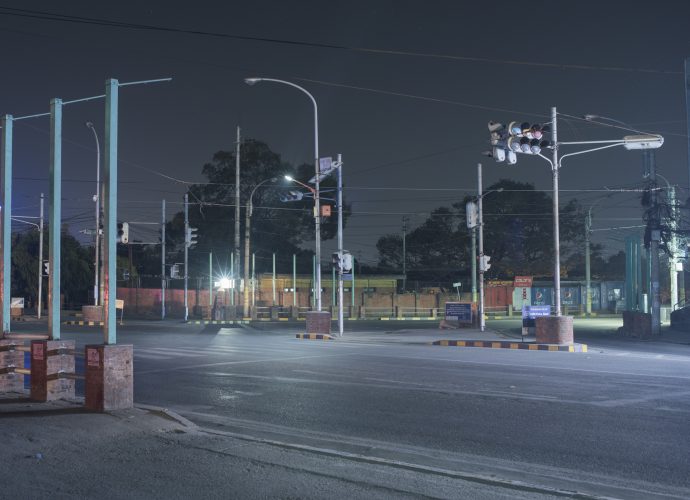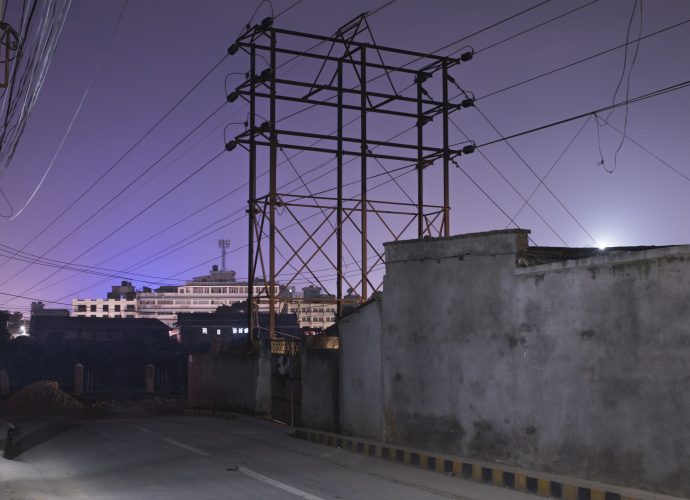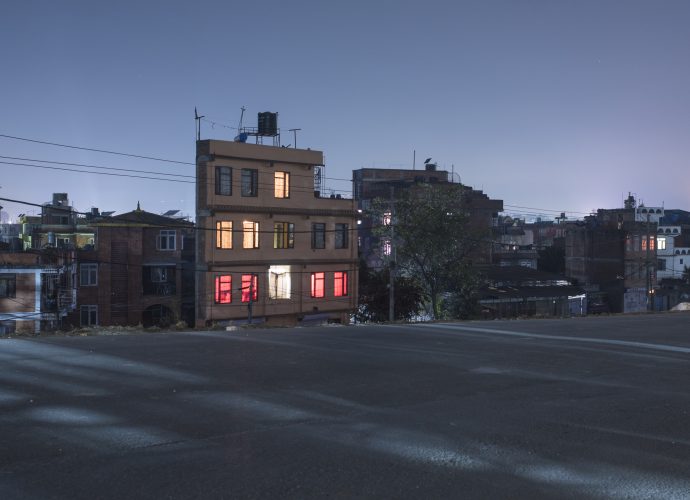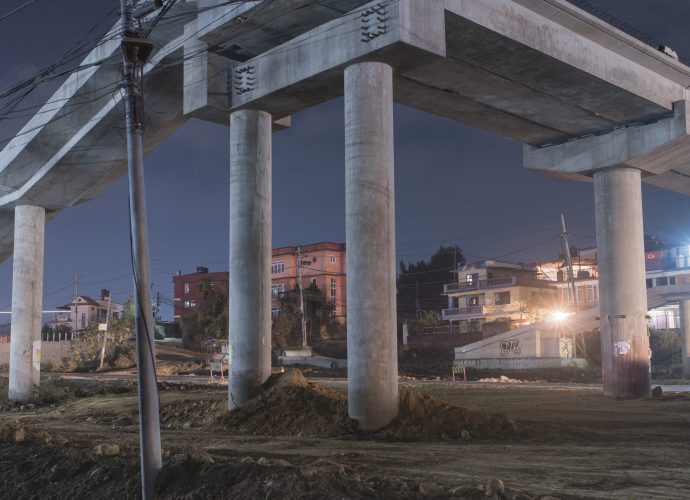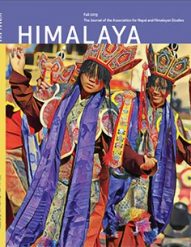Photo Essay
Shifting Valley: Kathmandu in Transition
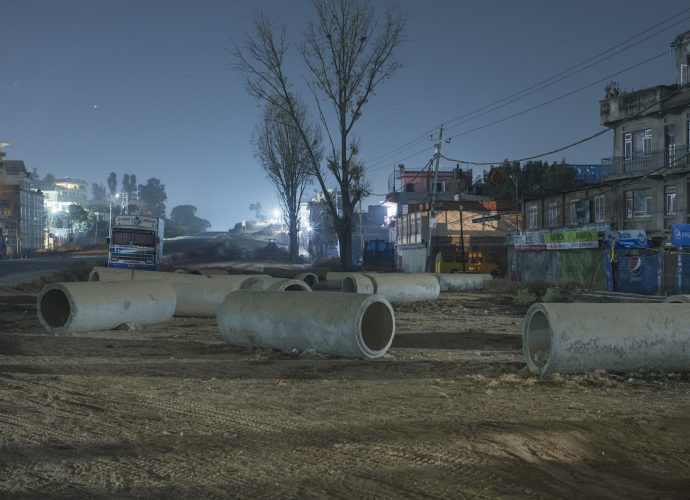
Heavy concrete pipes are being installed on the side of the road at Jhamsikhel. (Kumar, December 2, 2016).
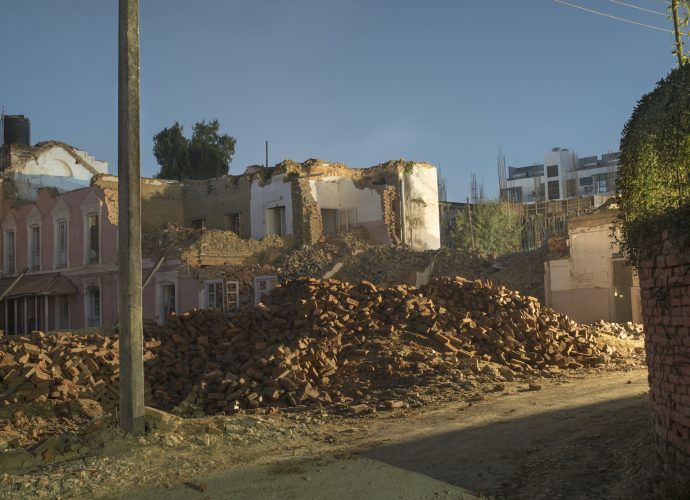
Scenes from a demolition site near Kupondole. This area will soon be rebuilt into a large building. (Kumar, December 1, 2016).
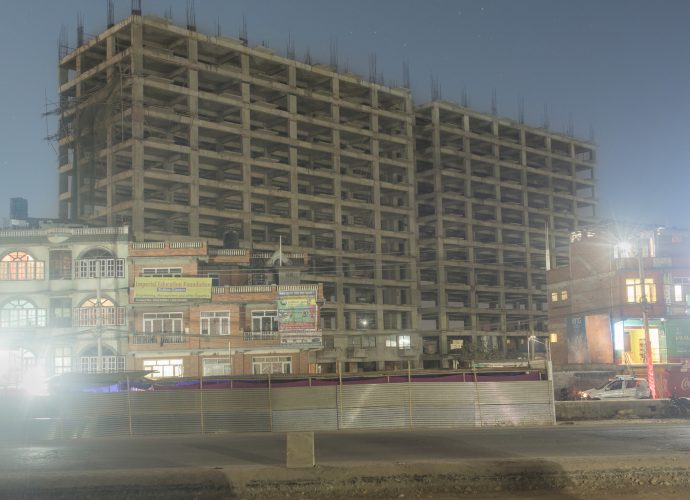
The old and the new co-exist: a high-rise under construction beside an older building near Gwarko, Patan. (Kumar, December 16, 2016).
by Indira Kumar,
Kathmandu, Nepal, is at once a city and a mountain valley which is being transformed by major infrastructural changes. In many parts of this metropolis, one can sense that old and new co-exist in a kind of chaotic harmony. New high-rise buildings have begun to dominate the cityscape. Roads are being widened. Massive concrete structures stand like lonely and haunting edifices in the nights.
In this photo essay, I aim to show how the landscape of the city is changing from a place of brick to a place of concrete, and how these architectural and infrastructural changes reflect the seemingly insatiable human urge for urbanization.
This project emerged during my International Semester at Pathshala South Asian Media Institute, Bangladesh. A portion of the course took place in Kathmandu. I began this project by walking along Ring Road at night. If I found any interesting structures, then I would stop and shoot. However, it was difficult to find more interesting structures just by walking only during the night, so I decided to scout for these structures and buildings in the morning and then return after dark to capture them in photographs.
I was very curious to see so many infrastructural changes happening in a city at once, particularly in the wake of the 2015 earthquakes. The roads were being widened. I could see a half-constructed foot path, a concrete skeleton of a huge apartment. In many cases, old buildings were being replaced and rebuilt into new high-rises.
These incongruous structures attracted me and I immediately started to shoot them. I was really drawn to the character of the building and the void that surrounded it during the night, as opposed to the daytime. When I initially started working on this project, it was more about these strange structures and forms; but as I was reviewing my images, I started to realize that they speak to an even wider and underlying subject: a city’s urge to urbanize. With this series of photographs, I want to portray how the city is changing every day as these huge structures define new metropolitan landscapes.
Indira Kumar is a freelance photographer based in Chennai, India. After finishing his engineering degree in Information Technology, he pursued his passion: photography. He recently graduated from the International Photography Program at the Pathshala South Asian Media Institute in Dhaka, Bangladesh. He is interested in working on long-term personal stories and social documentaries.
